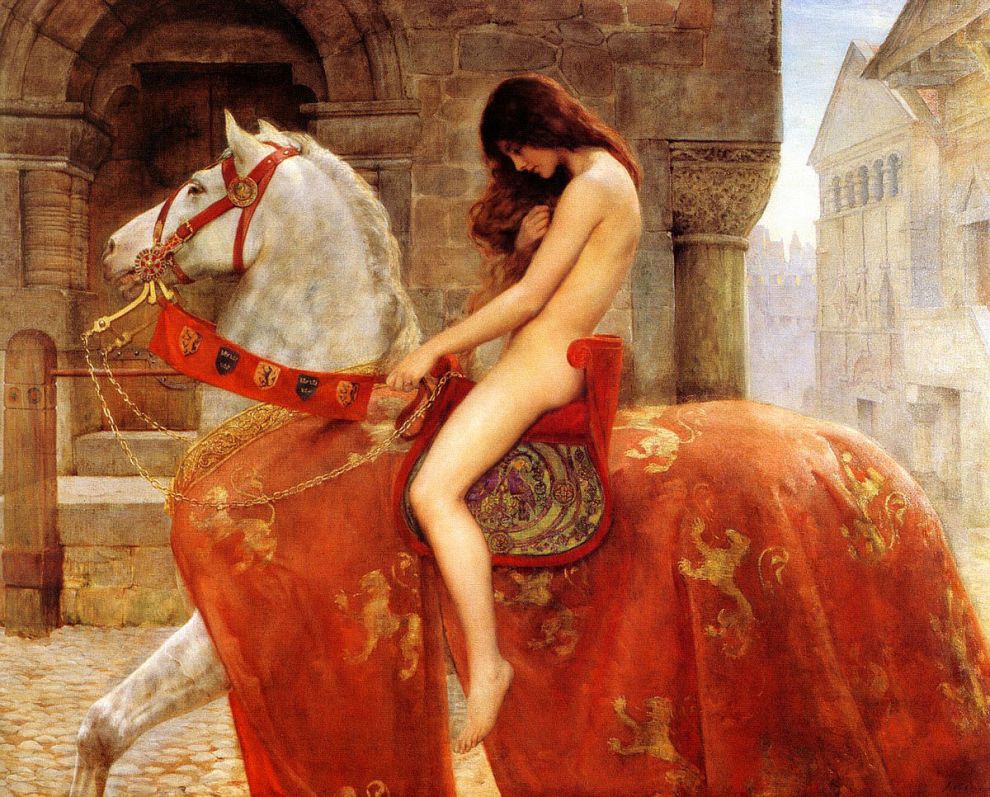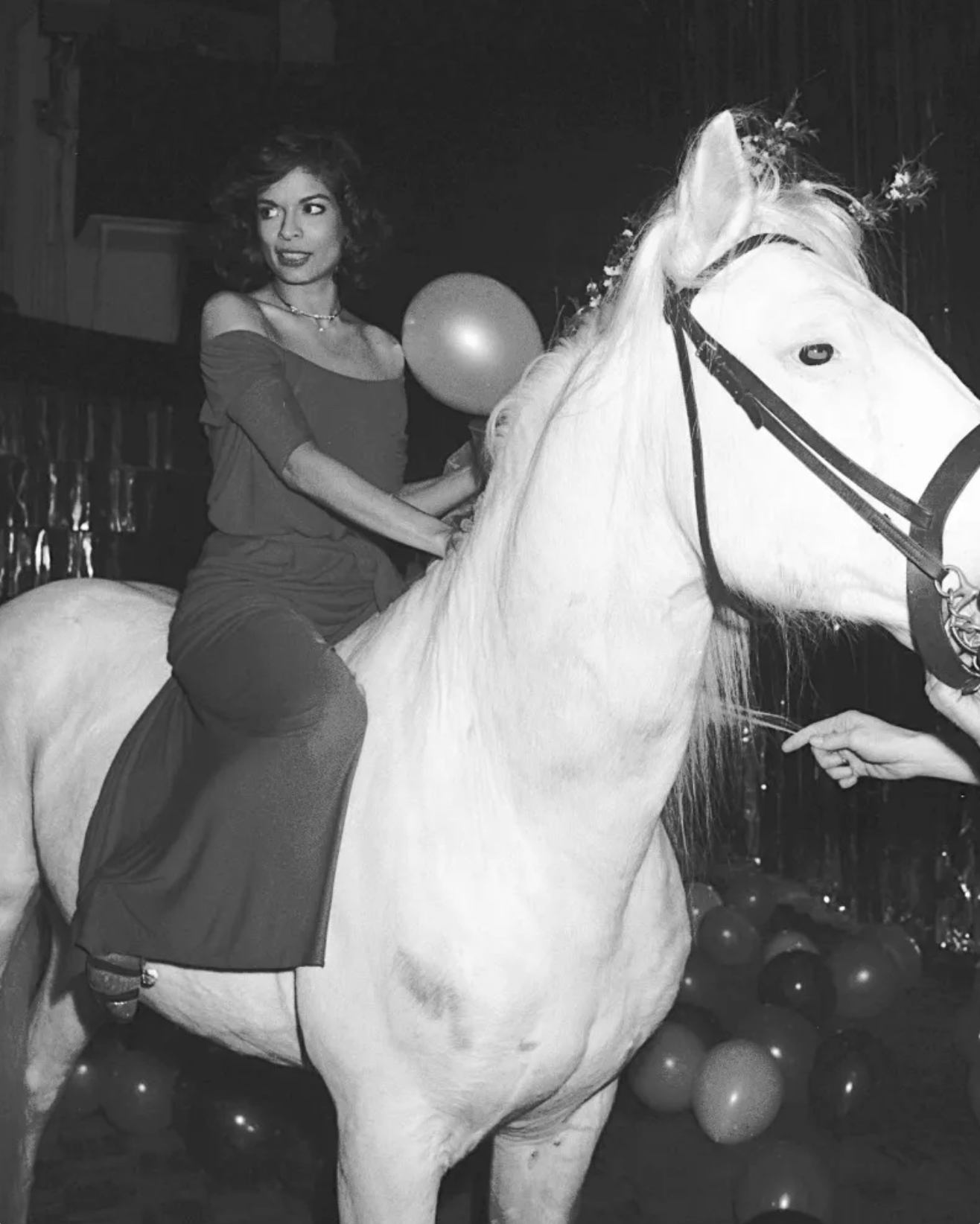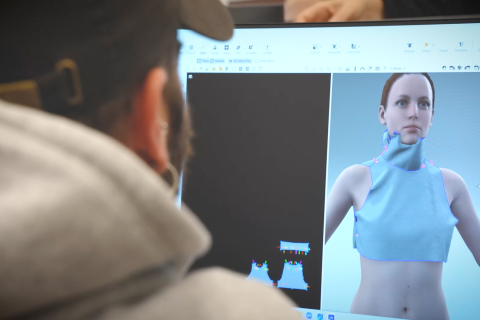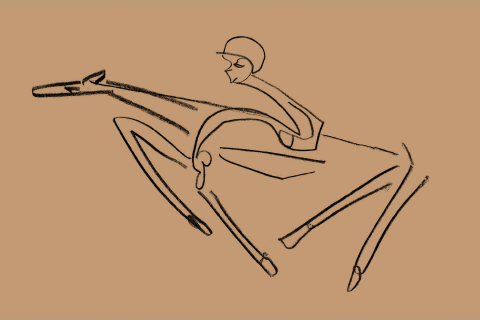Bezalel News
חדשות בצלאל
أخبار بتسلئيل
From Lady Godiva to Beyoncé | Women, Horses and the Matter of the Renaissance
Even before ‘Renaissance’, Beyoncé's seventh and most recent album was launched (July 29, 2022), its cover was revealed to the public. Queen B, is wearing a tiny metallic bikini made of crystals, her long hair is worn open as she sits in her full glory on a shiny silver holographic horse.
British Vogue took the lead and dedicated its July issue cover-photo to her. There, she wears a black dress that covers her entire body and sits on a horse that, like the other elements in the image, were given a red hue. Beyonce loves horses and loves to be photographed with horses. Her fans surely remember her performing on a galloping horse in the musical video clip for Run the World (Girls) (2011).
It seems like the most interesting question now, is not only about the exact message that each of these images tries to convey, but rather the general topic of the "Renaissance", that requires all creators in all creative fields to address the history of art and visual culture in all its nuances. Countless words have been written about the relationship between Origin and Originality. Here, I would like to focus on two essential concepts of this layered discussion: Revival, on the one hand, and Survival, on the other. What the two have in common is based on a conscious and declared use of the past as a source of inspiration - what is called appropriation or quotation, tribute or correspondence. But the difference between the concepts is equally essential. The French word ‘Renaissance’ means ‘Rebirth’. Resurrection or Rebirth assume one thing: the "thing" we are longing for is dead (on the level of consciousness, of course). Such a death occurred, according to the people of the Italian Renaissance, during the thousand years which they defined as the "Middle Ages" - between antiquity, with its glorious culture, and their own days. Admiration for Greek and Roman culture, and contempt for the ‘darkness’ of the Middle Ages; a desire to restore the former glory. In this context, the Equestrian statue (Gattamelata) of Erasmo da Narni by Donatello (Padua, Italy, 1453) is a masterful example of the Renaissance revival, being the first realistic monumental bronze horseman since antiquity. However, since Donatello revived the classical tradition, the statue of the horseman never came off the pedestal, and we meet it continuously in the art of the following centuries. This is where the concept of ‘Survival’ comes in. One of many examples is provided by the Equestrian statue of Giuseppe Garibaldi, the national hero of Italy (Rome, 1895). He does not revive a dead legacy, but provides for its continuity - another link in the chain.
Regarding Beyonce’s new album cover, here as well, we can’t speak of ‘Renaissance’, not in the deep sense of the term, and so the question is, what is this performance about? What are the sources of inspiration and how does she make use of them? And finally, what does she actually want to say and do the references rise beyond some kind of Trivia Quiz and manage to enrich her statement, while instilling it in the various contexts in which she operates?
Women riding horses is not a groundbreaking vision in the field of visual culture. And precisely because of that, we can’t help but think about the monument of Victoria Queen of the United Kingdom, in Liverpool (1870), the statue of Wilhelmina Queen of the Netherlands, in Amsterdam (1964) and the statue of Anita Garibaldi in Rome (1932), located not far from the aforementioned statue of her husband. Horse facing horse, man facing woman. And this Anita, unlike her solemn husband who’s sitting on his horse secure and idle, is all fire and brimstone. A drawn gun in one hand and a baby in the other, her hair blowing in the wind, as she gallops towards the battle in the name of comradery, justice and the desire for liberty.
Whether Beyoncé was thinking of Garibaldi's Brazilian wife is unknown, but surely, she was thinking of Lady Godiva, the 11th-century Anglo-Saxon noblewoman. According to the legend, after her husband, the ruler of Coventry city, imposed taxes on his subjects, he promised to ease the burden only if his wife would ride a horse naked through the city streets. Surprisingly, she agreed.
If so, what are the symbolic meanings of presenting a woman on a horse? These values that seem contradictory at times, produce a complex and multi-layered, though somewhat worn-out statement when interwoven with each other: femininity and masculinity, sensuality and strength, softness and determination, vulnerability and assertiveness.
In the context of the Revival and Survival discussion, it should be noted that conclusive proof is not always necessary when it comes to the relationship between the contemporary work and a previously existing artwork. In our case, the viewer's broad (and likely) familiarity with the ‘surviving’ iconography of horsemen and horsewomen, allows us to presume that Beyoncé considered all the aspects mentioned above and could trust us to understand them, or at least most of them.
And so, in the variety of texts reviewing the album cover published in the last few days, the option of it being a nod toward Bianca Jagger was mentioned, since the famous photograph of her on a white horse in the legendary New York club Studio54 (1977) turned into a sensation positioning her as an ultimate ‘It Girl’. Others referred to Beyoncé’s Texan heritage, being born in Houston. In any case, it is not a ‘Renaissance’ that we are talking about, but another link in a continuous chain. Sometimes the messages conveyed are layered and sometimes we’re left with a cliché. And unfortunately, it seems that this is what happened to Queen B this time.
Dr. Naomi Meiri-Dan
Lecturer in the Department of Visual and Material Culture











